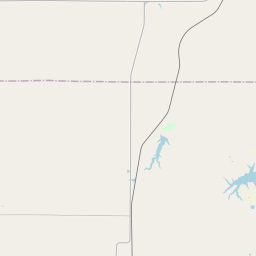The Camp of Co. 788 of the Civilian Conservation Corps
Historical marker location:






- March 31, 1933: President Franklin D. Roosevelt signs the Emergency Conservation Work (ECW) Act into law, establishing the Civilian Conservation Corps as part of his New Deal program.
- April 5, 1933: The CCC is officially launched, providing employment opportunities for unemployed young men between the ages of 18 and 25.
- 1933-1942: The CCC enrolls over 2.5 million young men from economically disadvantaged families, providing them with jobs, vocational training, and relief during the Great Depression.
Camp Life: CCC enrollees live in camps located in rural areas and work on various conservation projects across the United States. They receive food, shelter, clothing, and a small wage, with a portion of their earnings sent back home to support their families.
Conservation Projects: The CCC undertakes a wide range of conservation projects, including reforestation, erosion control, trail construction, forest fire prevention, wildlife conservation, historic site restoration, and the development of public parks.
Collaboration with Other Agencies: The CCC works in collaboration with various federal agencies, including the National Park Service, U.S. Forest Service, Bureau of Land Management, and Soil Conservation Service, to implement conservation programs and projects.
Educational and Vocational Training: In addition to their work, CCC enrollees receive educational and vocational training, such as literacy classes, courses in conservation and forestry, and technical skills development.
Military Training: During World War II, the CCC shifts its focus to providing military training for its enrollees, preparing them for military service.
- July 1, 1942: As the United States transitions into wartime efforts and the economy improves, the CCC gradually loses its significance. The program officially ends with the termination of new enrollments.
The Civilian Conservation Corps played a significant role during the Great Depression, providing employment, relief, and skills training to young men while accomplishing vital conservation work across the country. The program's legacy can still be seen today in the numerous parks, forests, and other public lands that were developed or improved through the efforts of CCC enrollees.
The first successful airplane flight west of the Mississippi River took place in Kansas in 1910, when Clyde Cessna flew his plane for the first time in Wichita.
The county was officially organized on February 13, 1867, and was named after Samuel J. Crawford, the Governor of Kansas at the time. In the late 19th century, mining became a significant industry in Crawford County, leading to a population boom and economic prosperity. The discovery of coal, zinc, and lead deposits in the region attracted thousands of miners from all over the country.
The mining industry played a vital role in the county's development, but it also faced several challenges. Labor strikes and mine disasters were common, leading to increased labor unrest and the establishment of labor unions. Despite these challenges, the mining industry continued to thrive and contribute to the county's growth until the mid-20th century.
In recent years, Crawford County has shifted its focus from mining to other sectors of the economy, such as healthcare, education, and manufacturing. Southeast Kansas Community Health Center, Pittsburg State University, and several manufacturing companies are now significant employers in the region. Additionally, Crawford County offers a variety of recreational opportunities, including parks, trails, and annual events, attracting both residents and visitors alike.
Crawford County Timeline
This timeline provides a glimpse into the major events and milestones that have shaped the history of Crawford County, Kansas.
- 1867 - Crawford County is established on February 13.
- 1867 - The first county elections are held in April.
- 1868 - The city of Girard is established in June.
- 1876 - Pittsburg is founded as a coal mining town.
- 1882 - The first railroad reaches Pittsburg in June.
- 1887 - Pittsburg State University is established.
- 1903 - The International Harvester Company establishes a manufacturing plant in Pittsburg.
- 1918 - Pittsburg State University becomes a four-year college.
- 1950 - The first housing development, Meadowbrook Addition, begins construction.
- 1961 - The first Walmart store in Kansas opens in Pittsburg.
- 1996 - The Pittsburg Farmers' Market is established.